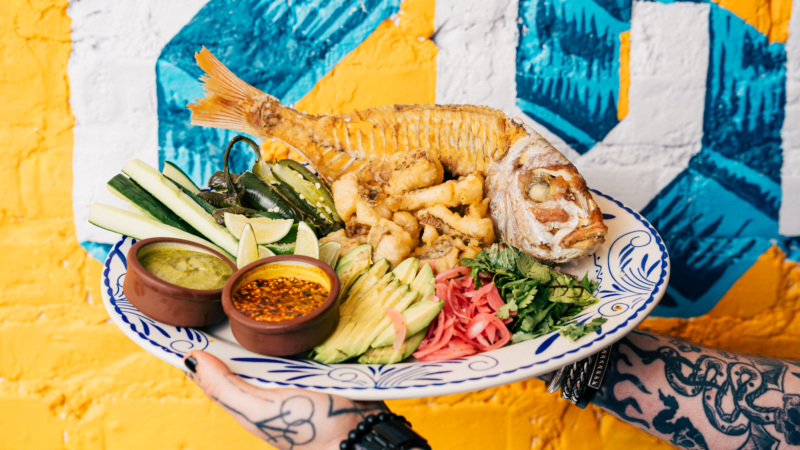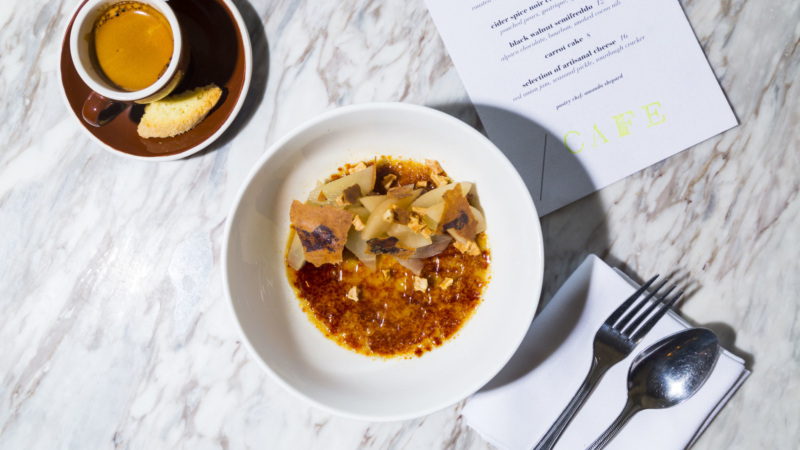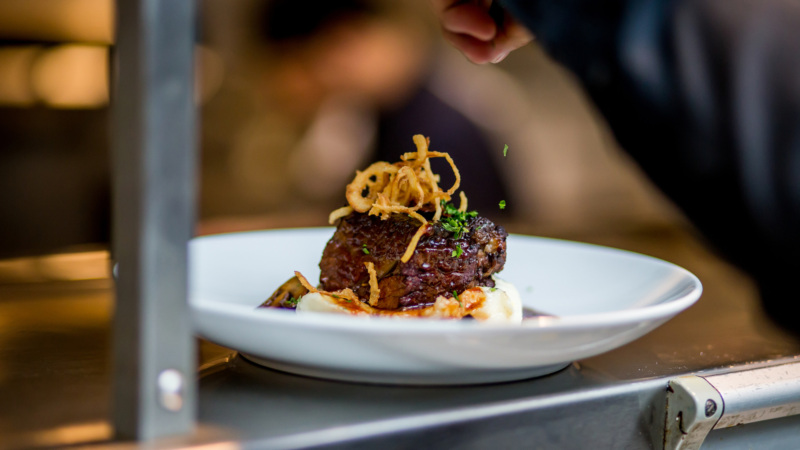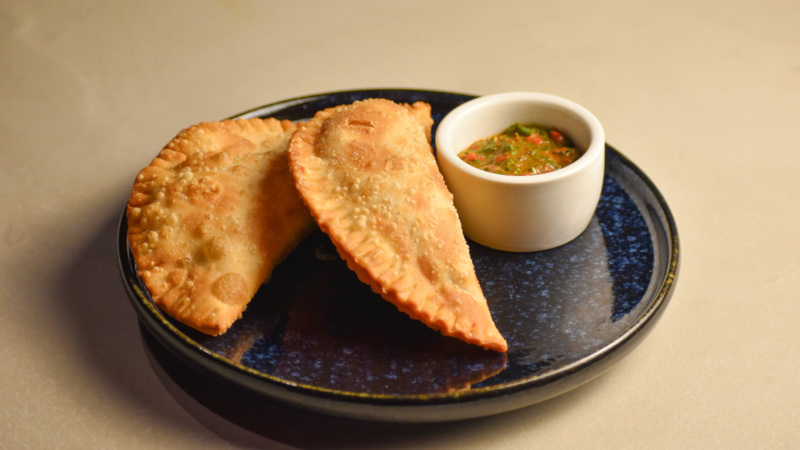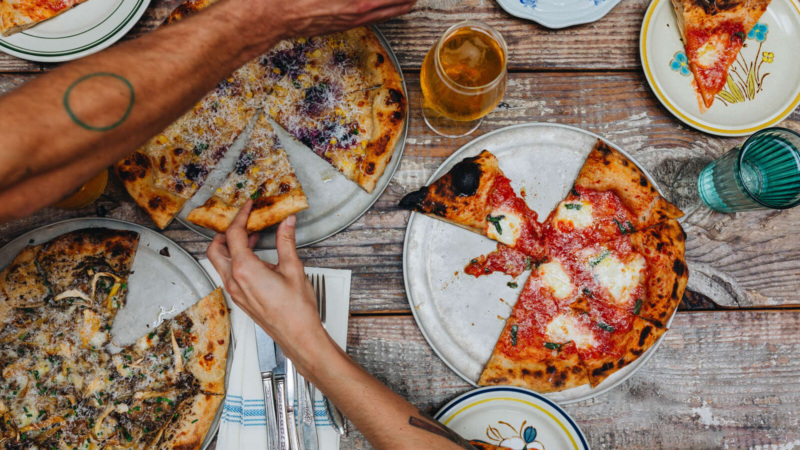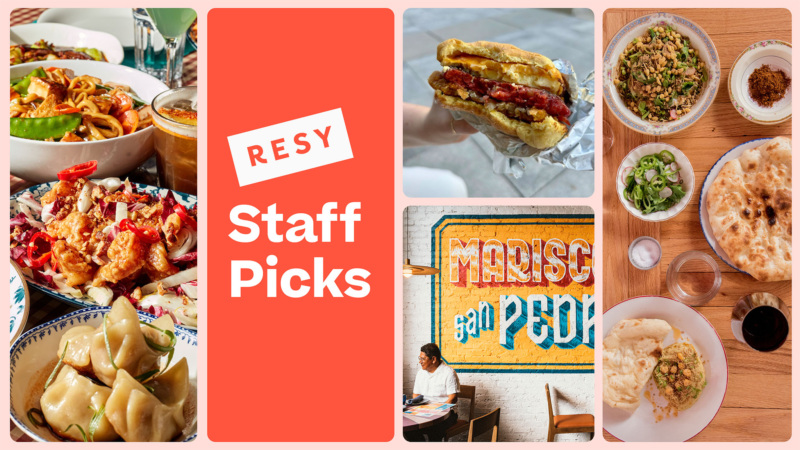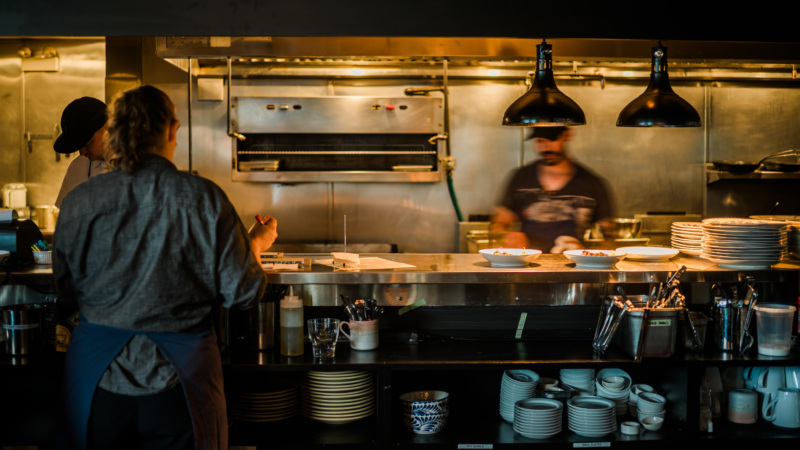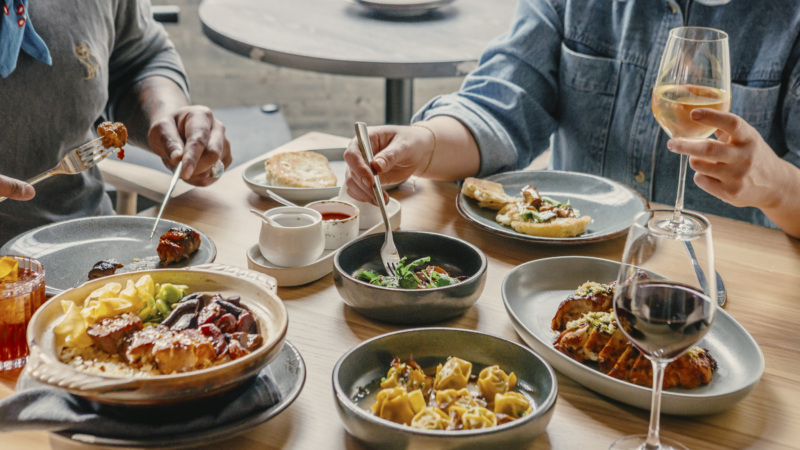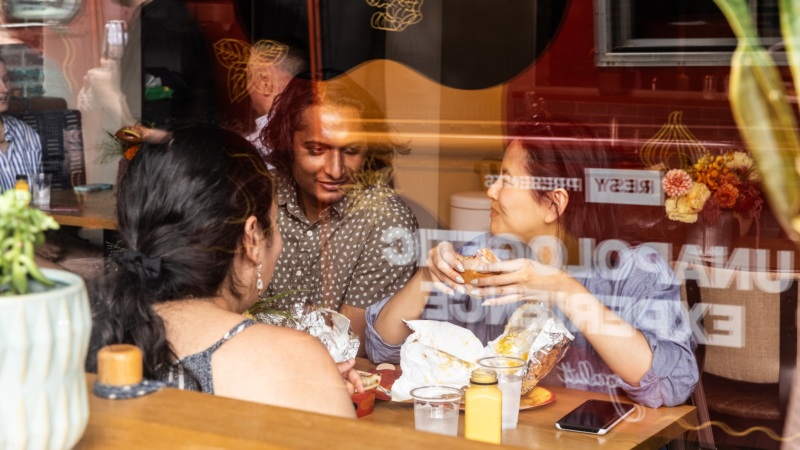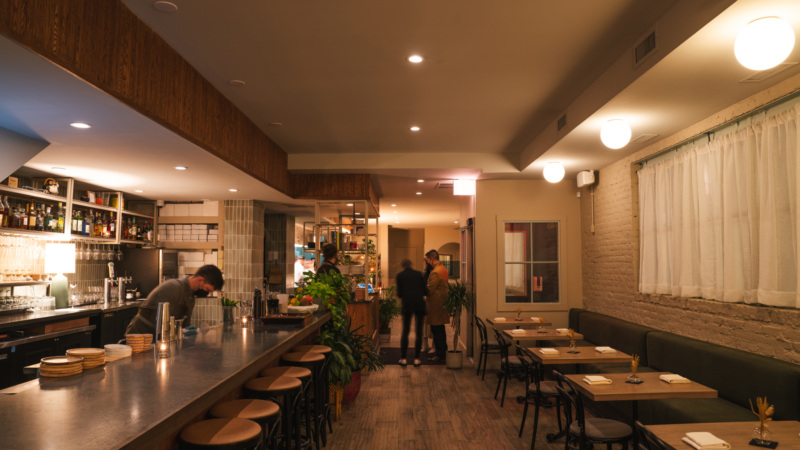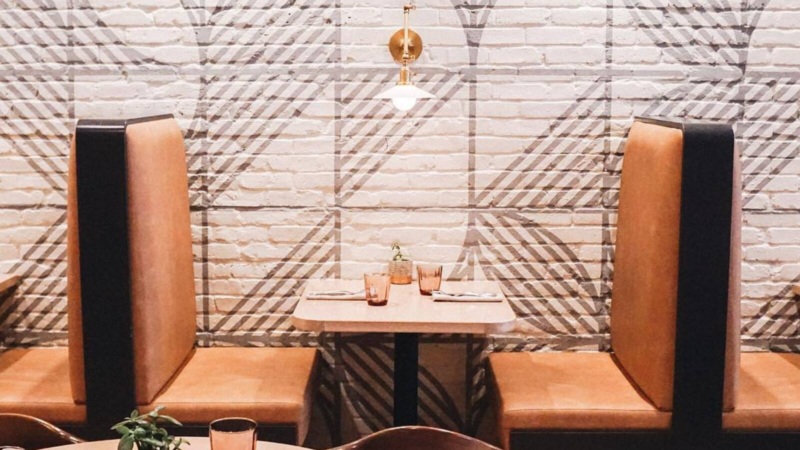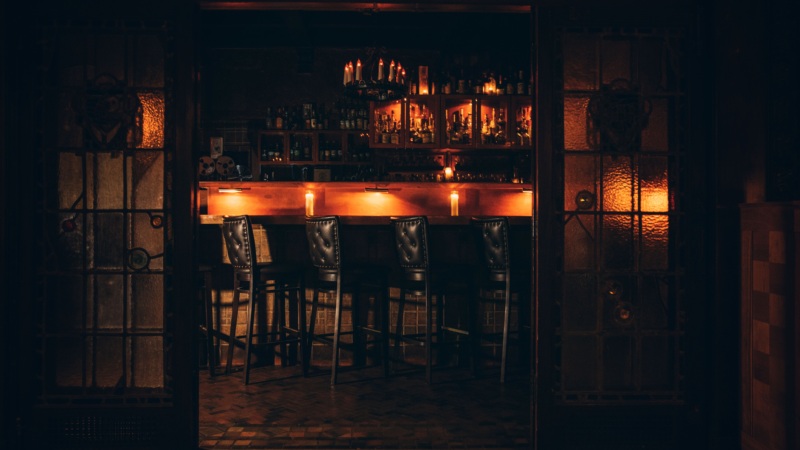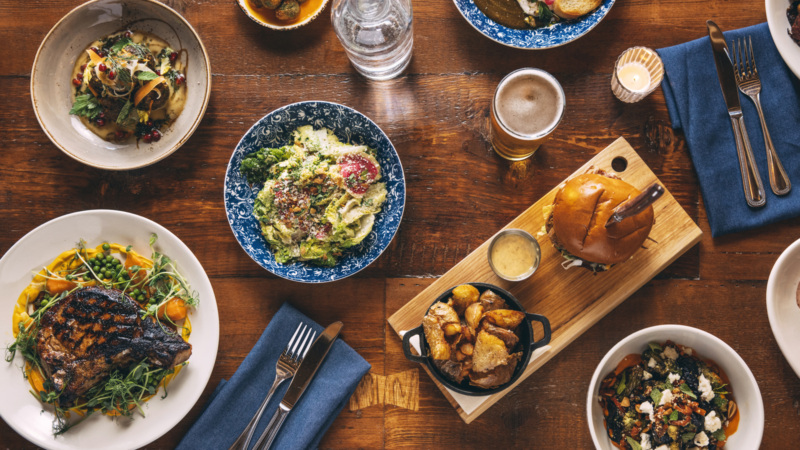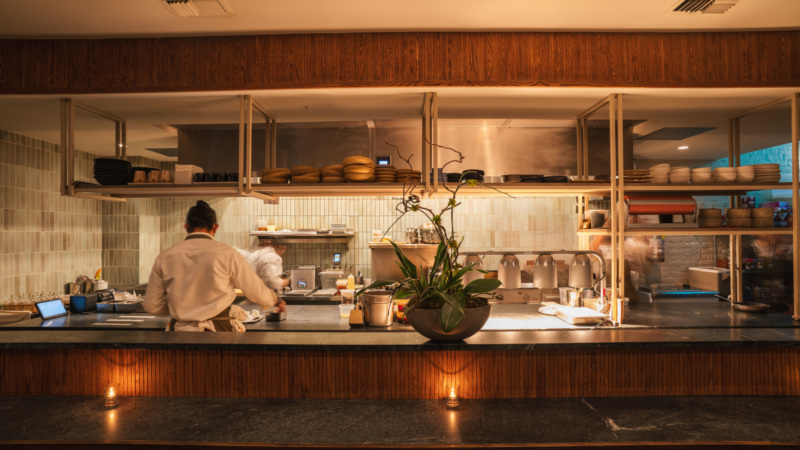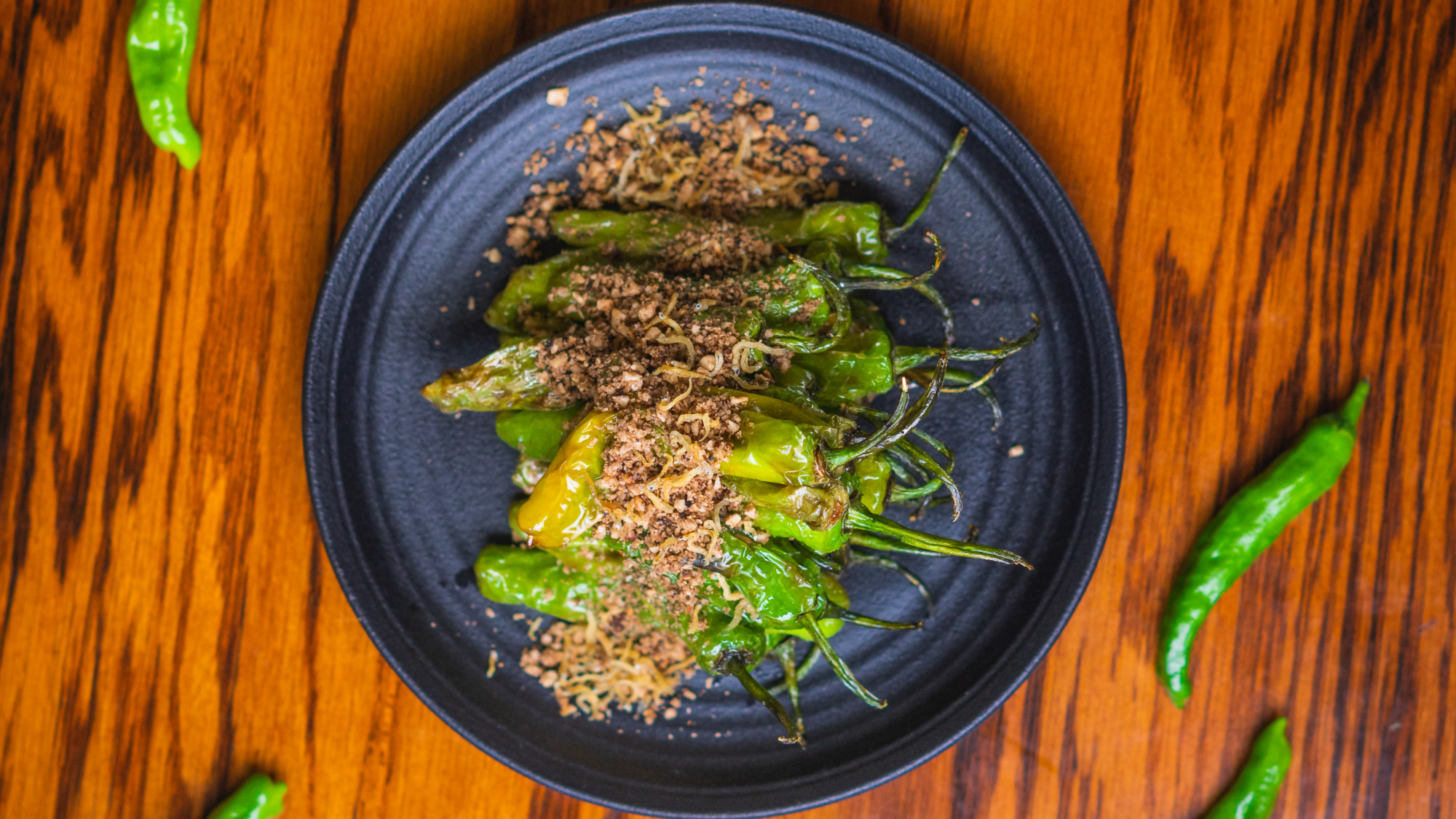
At Chicago’s Perilla, Intention Runs Deeper Than Dinner
At every pre-shift meeting, Perilla partner and general manager Thomas Oh starts with a variation on the same question: “What is your goal for today?”
It’s his way, he says, of reminding the team, day in and day out, “Don’t do your job out of frustration or with anger. Do it with intention.”
“It’s not just a question that’s thrown out there either,” notes partner and executive chef Andrew Lim, who helped the modern Korean barbecue earn numerous kudos. “He points to each person, and then we wait. ‘Tell us your focus, or we’re not opening today.’ They might not appreciate it now, but in five to 10 years, after they get some life experience, they’ll be like, holy s—, those guys did some things differently.”
But then, Oh and Lim’s intentions have always run deeper than dinner, since the childhood friends, industry vets, and second-generation Korean Americans opened Perilla in the Fulton River district in 2018. They want to build a more equitable and positive working environment, and to reconnect the city’s dispersed Korean American community by reigniting pride in its cuisine — and fostering creative collaboration. You first — perhaps unknowingly — glimpse their mission as you walk up to the restaurant, and behold the vast mural by renowned L.A.-based street artist Chris Chanyang (a.k.a. Royyal Dog) covering part of its facade: former First Lady Michelle Obama wearing a traditional Korean dress. Inside, pieces by Kimski chef and artist Won Kim dot the bar, and a contemporary mural by local visual artist David Heo blankets a full wall of the high-ceilinged dining room.
“All this ties back to the upbringing we had, and the lack of support from first-generation immigrant parents when it comes to exploring creative passions, whether that’s the art of food or paint,” says Oh. “Often that gets shut down because there’s immense pressure … to become a doctor or lawyer. We want to continue using Perilla as a beacon of inspiration for the next generation to chase after and explore what you love.”
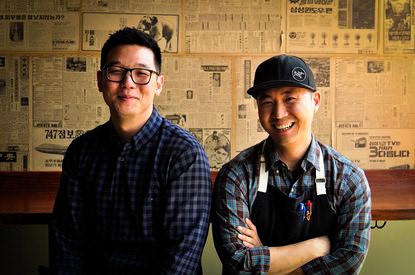

Lim and Oh grew up mostly in the northwest suburbs with strong ties to Albany Park, which teemed with Korean Americans in the ‘80s and ‘90s. Lim’s aunt ran a successful wedding shop and dry cleaners on Lawrence Ave., where his mom helped out.
“I grew up there and used to eat out all the time — donut shops, bakeries — it was just booming with Korean businesses and our culture,” Lim remembers. “As years went by, it disappeared.”
That’s the natural progression of cities, they acknowledge. Indeed, Albany Park was predominantly Jewish through the 1950s, when that community started migrating up north to Skokie and the North Shore.
“Koreans followed suit once they started making money; like, ‘Let’s get our kids into better schools,’” Oh says, adding that his family moved to Skokie. “It becomes like, is there a way to preserve our community, and create a sense of support, without necessarily living there, now that things are so scattered?”
Seated at a long wood table beneath Heo’s pink-and-green expanse, you’ll dig into Lim’s brick-red kimchi stew with pork and toothsome rice cakes; craggy fried chicken dusted with chile; and sticky-sweet LA galbi or luscious American wagyu that you char on inset grills. It’s flanked by sneakily complex vegetables — like asparagus with smoky trout roe, puréed squash, and toasted perilla seeds. Pre-pandemic, servers would deliver each dish with a side of context — that galbi was popularized by Korean immigrants in Los Angeles, for instance, or that scallion salad is a traditional accompaniment to Korean barbecue. (Those pre-shift meetings work, it seems, since this could come off as pretentious but never does.) The menu mix betrays Lim’s upbringing, and his background with Italian, French, and American cuisine; he worked at the Bristol, Formento’s and Swift & Sons, and debuted City Rock Korean Kitchen at the Thompson Center just before Perilla.
That Asian American visual art, and traditional Korean cookery, form the restaurant’s backbone represents the vision that Lim and Oh (formerly a manager at Lettuce Entertain You and GM of Roka Akor restaurant) have for a thread that connects future generations to the fading physical remnants of Chicago’s former Koreatown.
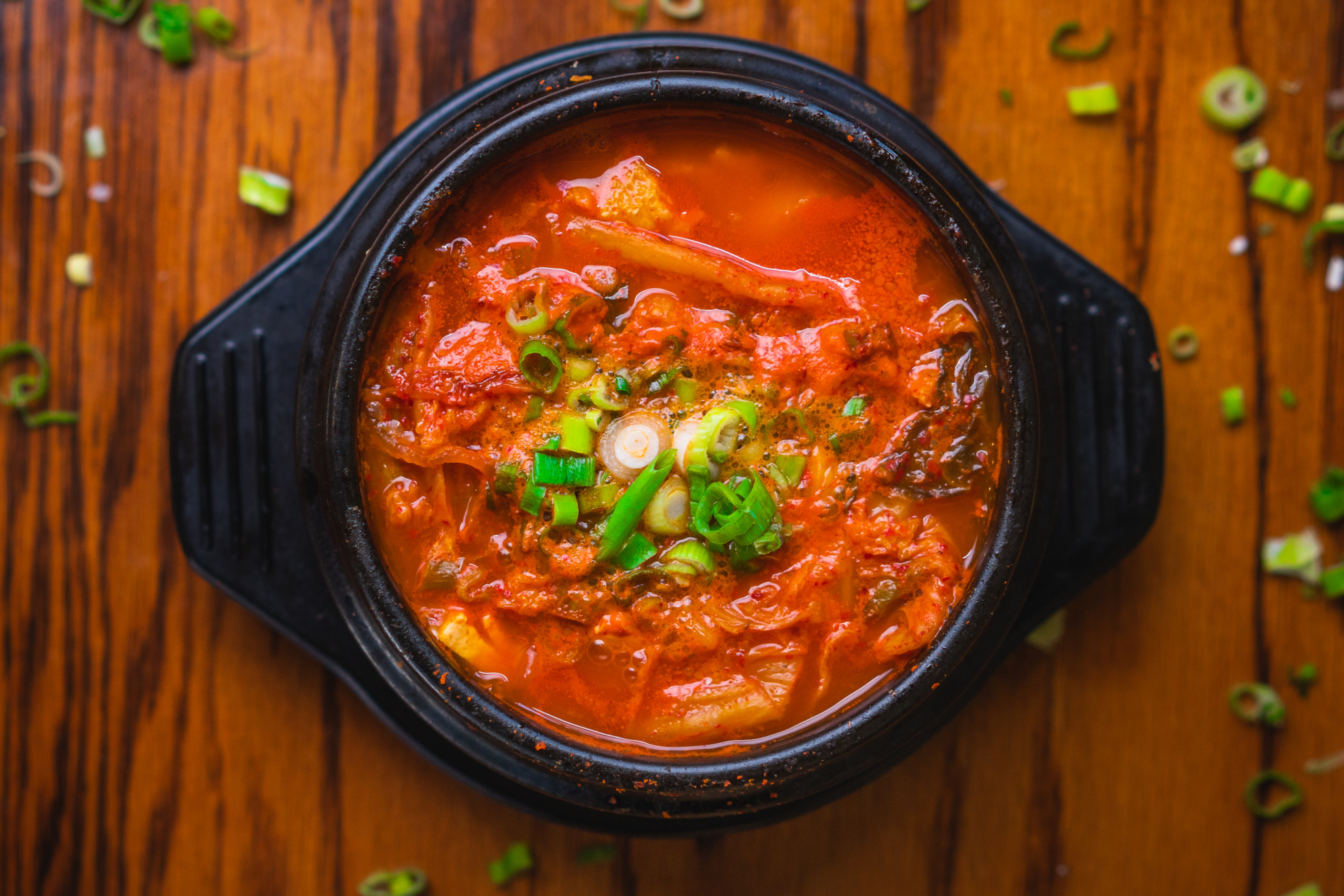
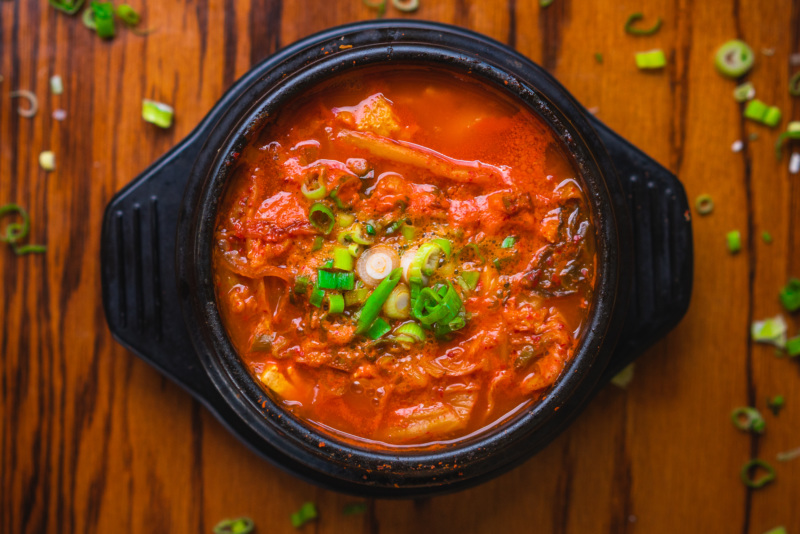
To-go or nothing
Since opening Perilla, Lim and Oh have had to balance the often competing ends of creative expression and financial viability. They streamlined the menu to make it easier to cook — and to make service better for guests. They eased off of cheffier plates like tartare dotted with edible flowers. Instead they leaned into the modern, Midwestern-tinged Korean comforts they were becoming neighborhood favorites for, like chile-flecked fire chicken covered in melted chihuahua cheese. They cross-trained their staff, and instilled tip sharing across the front-of-house crew to boost retention and morale, and tacked an optional service fee onto guest checks, which has helped lift back-of-house wages from $15 to $20 an hour.
Their constant desire to reinvent what’s now increasingly seen as a fraught traditional model of running a restaurant took on life-or-death weight when the pandemic pushed the entire industry to the brink last spring.
Perilla suddenly became a to-go restaurant, which meant Lim had to evolve the menu again, leaning hard into his Korean food preservation roots via kimchi-heavy stews, and surfacing travel-friendly rice bowls and budget-friendly comfort dishes, like the warm hug of Korean-Chinese jajangmyeon noodles. They tapered use of third-party delivery providers in favor of direct orders through Square, and embraced grassroots marketing tactics, like slipping notes into third-party delivery bags encouraging direct ordering, and depositing flyers in the mail rooms of condo buildings during food runs.
When Perilla’s 60-seat patio reopened in early December — a partially covered oasis draped in ivy — with a mere four front-of-house employees, and health concerns over reusable dinnerware, Perilla asked customers to order at the window and clean up their disposable plates. The restaurant even turned said patio into a fried-chicken pop-up called Sir Chicken — serving twice-fried white and dark meat chicken dusted with chile flakes and cayenne pepper.
They got help, too — from vendors willing to forgo payments, from the federal government in the form of PPP loans, and from customers who donated in large and small amounts and wrote letters of support.
“Every phone call coming in, every order of food, there was such an immense amount of gratitude,” Oh says. “The love we felt from vendors and the community was insane. It was a reminder to keep pushing, keep fighting.”
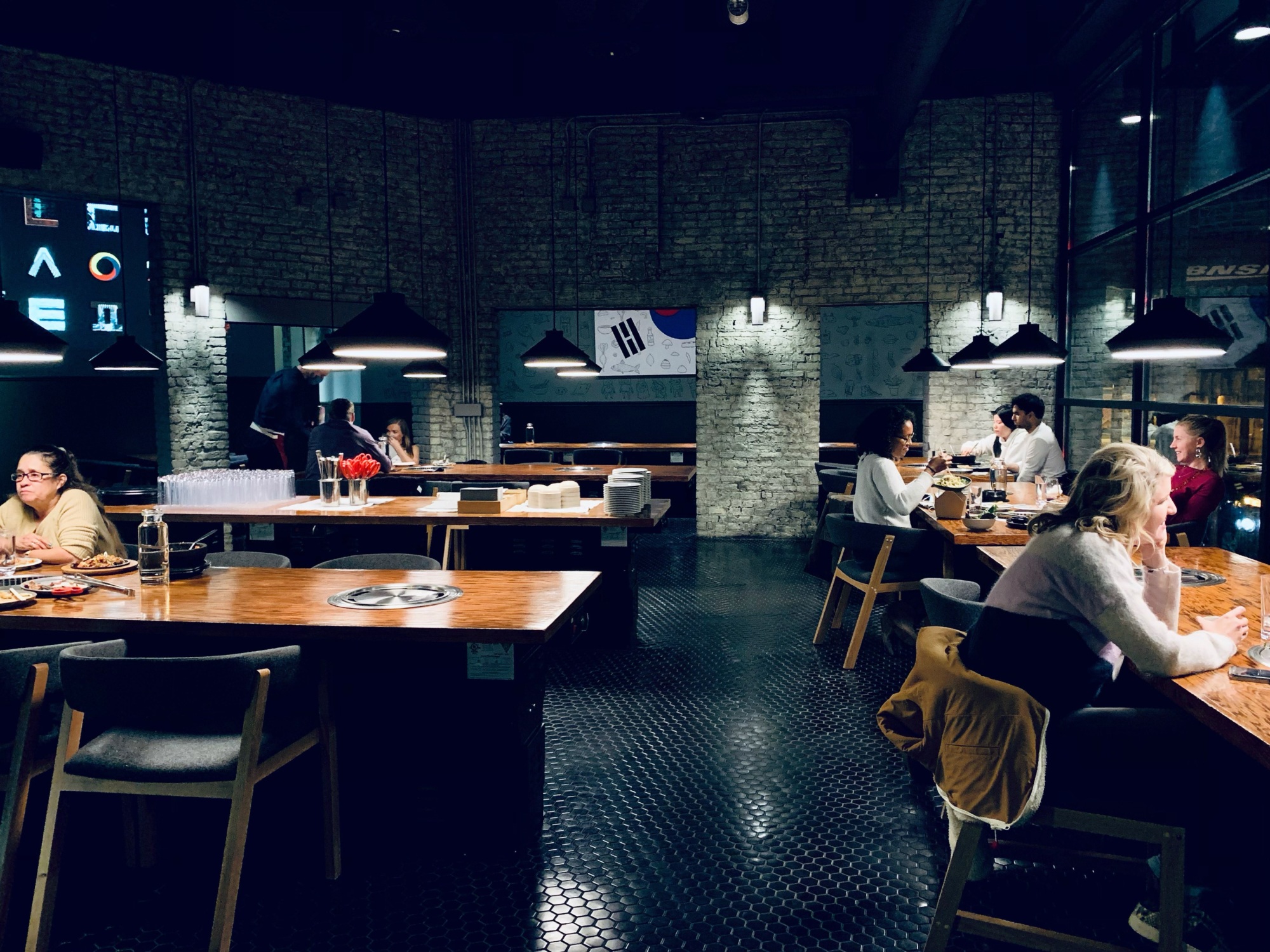
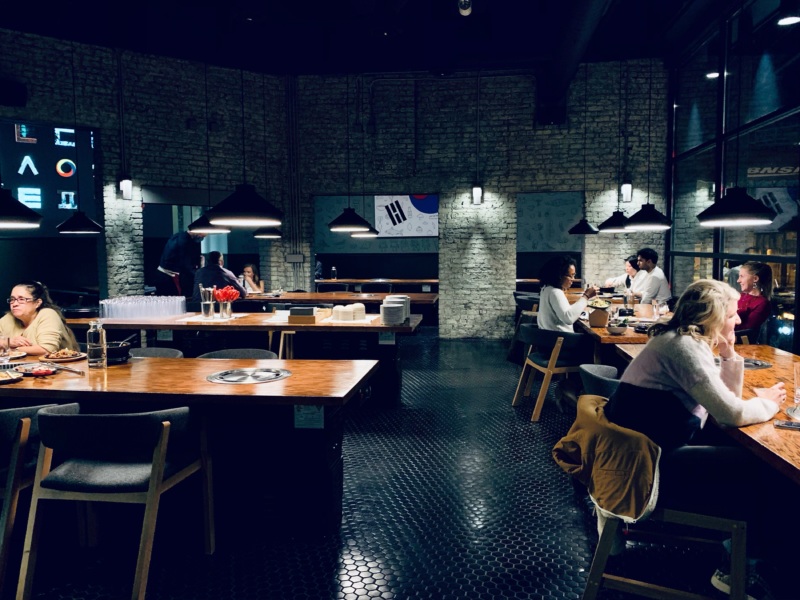
Then, as they limped into late spring, they were gobsmacked to learn their now-delivery restaurant had received a Bib Gourmand, the Michelin Guide’s nod to more affordable restaurants. It was a year in which Michelin’s inspectors took a notable interest in international cuisine — highlighting Mexican (Tzuco), Filipino (Kasama), Spanish (Mama Delia), and South Asian (Vajra) restaurants — and finally awarded a Chicago Bib to a Black woman-owned eatery, Soulé.
Oh recalls calling Lim in tears to congratulate him. And Lim replied, “We both did this … it’s not for some CEO or rich owner of a company, it’s for us. And for our community of people of color and second-generation immigrants to show you can do this, too.”
“Of course I only cried harder,” Oh says.
At the next pre-shift, everyone’s chests puffed out a bit more than the day before as they set their intentions — and began the long climb back to dining in (which is still a ways away for Perilla, despite doing solid business now. “We’re not staffed to provide the best service and experience if we just open the doors to make that extra dollar now,” Lim says).
At the same time, the kudos are a momentary jolt to the agonizingly slow-turning wheel of progress. Lim and Oh felt it grind to a halt with the frightening uptick in violence against the AAPI community this past year, which rendered Lim’s own mom afraid to leave her house in Rogers Park unaccompanied.
“It’s something we’ve personally dealt with our entire lives,” Lim says. “Before I started this restaurant, every day of my life, without fail, I was reminded I am not white.”
But how best to help, Lim and Oh wondered aloud at one of their table talks. Decry? Donate? Then they realized they were already on the right path — giving oxygen to positivity.
They commissioned Heo for the mural, which he completed in mid-March, only days after the shootings at an Atlanta spa left eight people dead, six of whom were Asian women. They met with the Chicago History Museum to help place the violence into context. They continue to collaborate with fellow food industry folks on efforts like Community Kitchen, the free restaurant within Kimski that launched during the pandemic; and on food drives in Englewood with community leader Howard Bailey, which featured contributions from fellow chefs including Joe Frillman (Daisies), Tony Priolo (Piccolo Sogno), and Adrienne Lo (formerly Fat Rice). They started a podcast, “Kimchi Kids,” which rolls out July 15 and will feature interviews with pros from all sorts of industries, starting with Next restaurant executive chef Ed Tinoco and the Aviary bar director Alexis Belton.
Meanwhile, they’ll keep doing their part sharing their culture one dish at a time.
“Everyday we get someone who eats kimchi for the first time with a smile on their face, and I get pure joy through that,” Oh says. “If sharing that one plate of food brings people one step closer to who we are, then we’ve succeeded.”
Maggie Hennessy is a Chicago-based freelance food and drink journalist, and the former restaurant critic for Time Out Chicago. Her work has appeared in such publications as Bon Appetit, Food & Wine, Taste, Eater and Food52. Follow her on Instagram and Twitter. Follow Resy, too.
Discover More
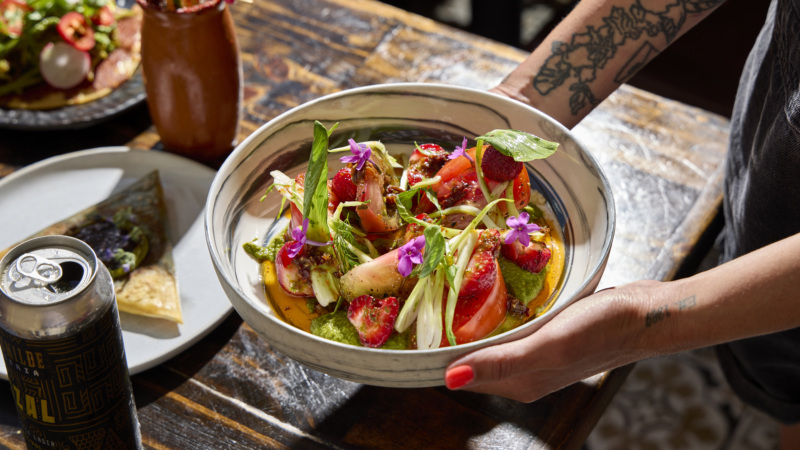
Stephen Satterfield's Corner Table


